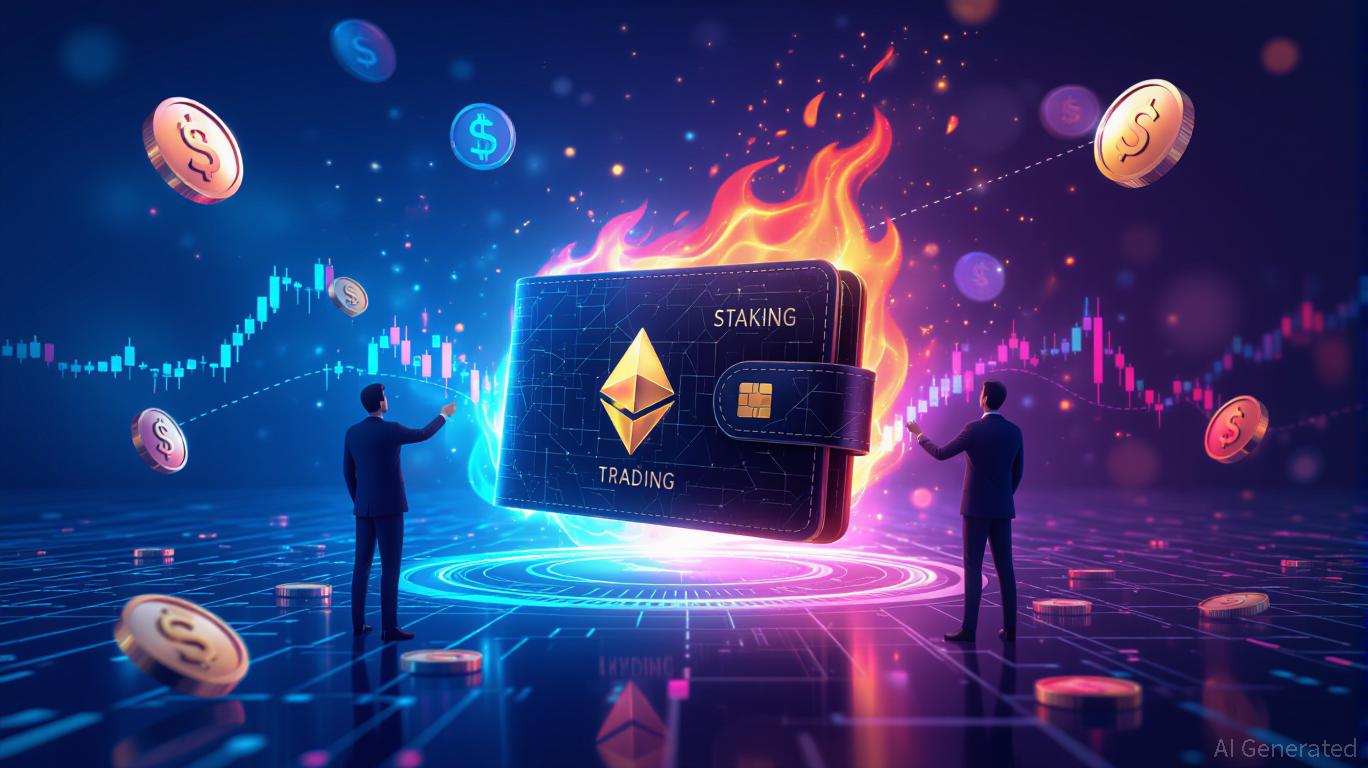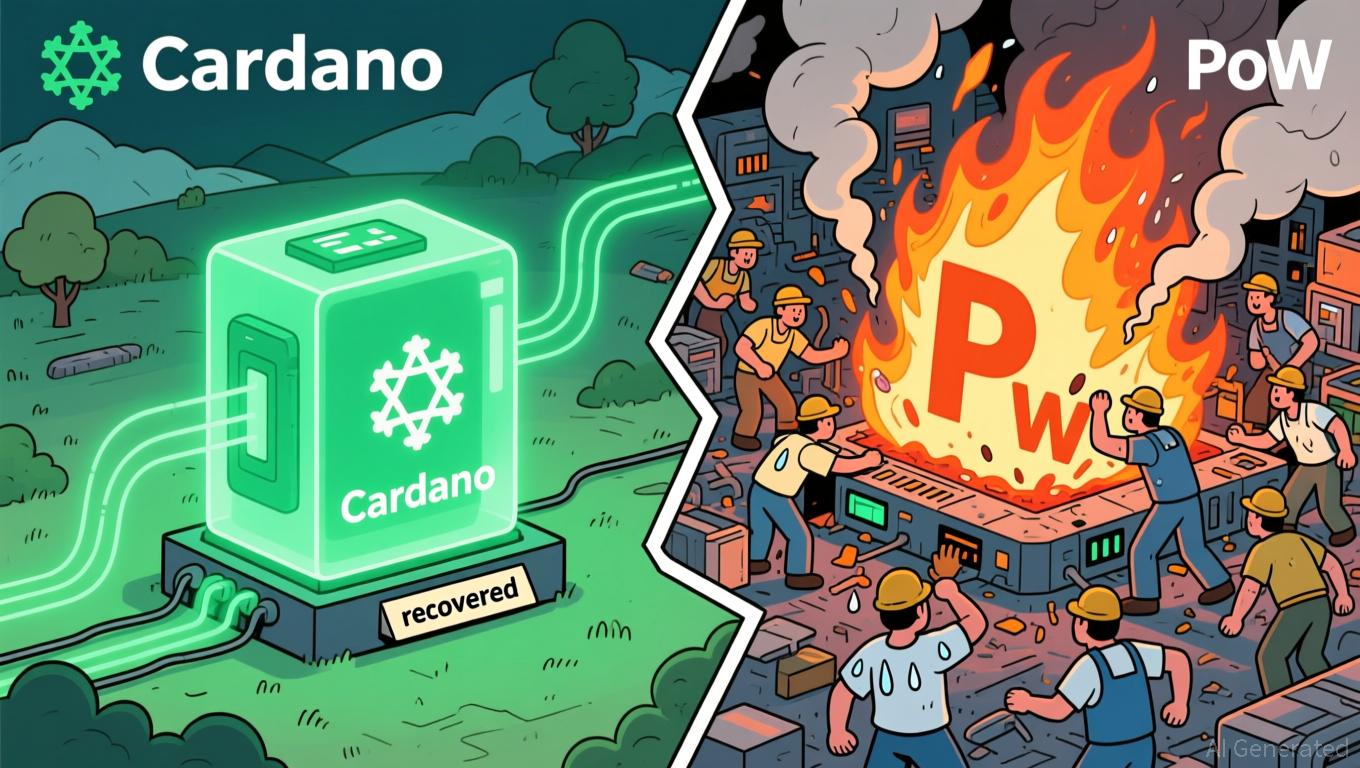Hyperliquid's Latest Rise in Trading Activity: An In-Depth Look at On-Chain Liquidity and the Progression of DeFi
- Hyperliquid dominates decentralized derivatives with $317.6B Q3 2025 volume, 73% DEX market share, and $653B quarterly turnover. - HIP-3 growth mode slashed taker fees by 90%, while HyperEVM/HyperCore blockchain enables zero-gas, sub-second trades and cross-chain interoperability. - Platform faces volatility risks: 3 major 2025 attacks including $4.9M POPCAT bad debt incident, exposing thin-liquidity vulnerabilities. - HYPE token surged 640% post-2024 launch with $9.3B market cap, but faces competition f
On-Chain Liquidity: The Catalyst Behind Hyperliquid’s Expansion
Hyperliquid’s rise is rooted in its capacity to provide substantial, affordable liquidity—a vital element for attracting both individual and institutional traders. By July 2025, the platform had already surpassed $320 billion in perpetuals trading and generated $86.6 million in protocol revenue, with
A significant factor behind this liquidity boom is the introduction of Hyperliquid’s HIP-3 growth mode in November 2025. This program
DeFi Market Structure: Uniting EVM and Native Chains
Hyperliquid’s technical setup has also transformed the structure of DeFi markets. By merging HyperCore and HyperEVM, the platform
Additionally, Hyperliquid’s share of the decentralized derivatives market climbed to 73% of DEX trading volume in Q3 2025,
Navigating Crypto Volatility: Prospects and Challenges
Hyperliquid’s position in the volatile crypto sector is both an asset and a potential weakness. Its advanced Layer 1 blockchain (HyperBFT consensus, 0.2-second block intervals) supports complex derivatives strategies, including diversified and hedged trading through collaborations like D2 Finance
However, Hyperliquid’s prominence has also made it susceptible to market manipulation. In 2025, the platform experienced three significant incidents,
Investor Sentiment and Growth Potential
The performance of the HYPE token serves as an indicator of market confidence. Since its launch in November 2024,
Nonetheless, competition is intense. Aster’s rollout of 300x leverage (compared to Hyperliquid’s 40x maximum) has attracted traders seeking greater risk and reward,
Conclusion: Betting on DeFi’s Next Chapter
Hyperliquid’s recent surge in trading activity highlights its expertise in on-chain liquidity and DeFi technology. Its ability to generate $317.6 billion in trading volume without depending on incentive programs, along with its advancements in interoperability and order book mechanics, cements its status as a frontrunner in decentralized derivatives. Still, the platform’s exposure to volatility-related risks—stemming from both manipulation and fierce competition—remains a significant concern.
For investors, Hyperliquid stands as a bold wager on the evolution of DeFi. Its HIP-3 expansion strategy and staking framework indicate a platform geared for ongoing growth, but the ever-changing crypto volatility sector requires constant innovation. Those prepared to manage the risks may find Hyperliquid’s growth story as compelling as its impressive statistics.
Disclaimer: The content of this article solely reflects the author's opinion and does not represent the platform in any capacity. This article is not intended to serve as a reference for making investment decisions.
You may also like
XRP News Today: XRP ETF Investments See $4 Billion Influx Amid Price Drop: Market Adjusts After Recent Surge
- Ripple's XRP ETFs see $128M inflows and regulatory approvals, but prices drop amid market correction. - XRPI and XRPR ETFs fall 8%, while XRPC ETF generates $58.5M in first-day trading, surpassing Solana's debut. - SEC approvals confirm XRP's commodity status, boosting institutional confidence as nine new XRP ETFs target $4B–$8B inflows. - Technical analysis shows XRP-USD above $2.00, with analysts projecting $2.50 by late 2025 if ETF AUM exceeds $8B.

San Francisco Hotel Promotions and Autonomous Taxis Indicate Economic Recovery
- San Francisco's hotel market shows recovery as Newbond and Conversant buy two iconic hotels for $408M, signaling investor confidence amid rising convention bookings. - Tech innovation accelerates with Amazon's Zoox launching free robotaxi trials, competing with Waymo and Tesla in autonomous vehicle testing. - Deutsche Bank raises capital via a 7.125% AT1 bond and revises ESG targets to include 900B€ in transition finance by 2030, reflecting industry decarbonization trends.

TWT's Revamped Tokenomics: Redefining Value for Holders and Ensuring Long-Term Project Viability
- TWT rebranded as Toncoin in 2025, shifting to gamified utility via Trust Premium, emphasizing user engagement and gas discounts. - A 2020 token burn reduced supply by 40%, but liquidity risks persist due to pre-burn circulation and centralized utility dependencies. - Lessons from TNSR's collapse highlight the need for decentralized use cases, as TWT's value relies on recurring incentives and cross-chain liquidity. - Analysts project TWT could reach $15 by 2030, contingent on sustained adoption and addres

Cardano News Today: Blockchain Dispute: Should Those Responsible for Chain Splits Face Legal Action or Should Open-Source Creativity Be Safeguarded?
- Solana co-founder Anatoly Yakovenko praised Cardano's swift recovery from a November 2025 chain split, calling its resilience "pretty cool" despite a malicious transaction exploiting a deserialization bug. - Cardano's Ouroboros consensus model enabled rapid convergence without hard forks, preserving transaction throughput and avoiding fund losses through emergency node upgrades. - A public debate emerged between Yakovenko and Cardano founder Charles Hoskinson over legal accountability, with Hoskinson adv
